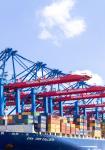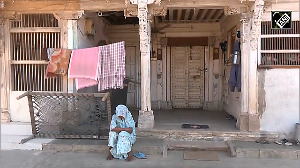Global rating agency Standard & Poor's on Wednesday upgraded India's outlook to positive from stable and affirmed the sovereign 'BB+/B' ratings to the country due to improvement in government finances.
Further economic liberalisation and improvements in infrastructure and fiscal consolidation would help India achieve investment grade in future, S&P said in a release.
"The outlook revision reflects improved prospects of a stabilising debt burden based on greater effort across all levels of governments to consolidate their fiscal positions," said Standard & Poor's credit analyst Ping Chew.
The Central and state governments (general government) have increased efforts to rein in their budget deficits.
The Central Budget 2006-07 puts fiscal consolidation back on track, while the assessment on state governments' comes in the wake of better-than-expected fiscal outlook.
The general government deficit is expected to fall below 8 per cent of 2006 GDP from 10 per cent in 2002.
"India's economic prospects are stable and strong and we project incremental structural reform will raise GDP trend growth over 7 per cent," Chew said.
"Further liberalisation of the economy and infrastructure improvements will help India's trend growth. Such reforms coupled with continued fiscal consolidation will help India achieve investment grade over time," he said.
On the other hand, if the fiscal consolidation stalls or the reform agenda derails, the outlook could be revised to stable, Chew cautioned.
Going forward, tax measures -- including expanding Value Added Tax and service tax -- and tightening tax administration should result in more buoyant government revenues, especially as the highly taxed industrial sector grows more robustly and as the service sector is taxed, S&P said.
Coupled with operating expenditure control, more efficient spending, and implementation of fiscal responsibility laws, India should see a steady reduction of general government deficits and a falling debt burden.
India's incipient fiscal consolidation addresses its principal credit weakness.
Public finances remain among the worst of rated sovereigns, leaving it vulnerable to any secular decline in growth rates or increase in real interest rates.
The general government's consolidated debt is projected to peak at 90 per cent of GDP in 2006, with interest payments consuming one-third of general government revenue.
India's contingent liabilities are also high, it said.
Government-guaranteed debt alone amounts to 9 per cent of 2006 GDP, and the state-owned enterprises are generally inefficient, S&P said.
The chaos in banking during the recent strike at country's largest commercial bank the State Bank of India and the unreliability of the power supply also illustrate a still-developing operating environment, including the payment system, and remaining challenges in effective administration and reforms for the labour market and public sector, it said.
Do you want to discuss stock tips? Do you know a hot one? Join the Stock Market Investments Discussion Group






 © 2025
© 2025